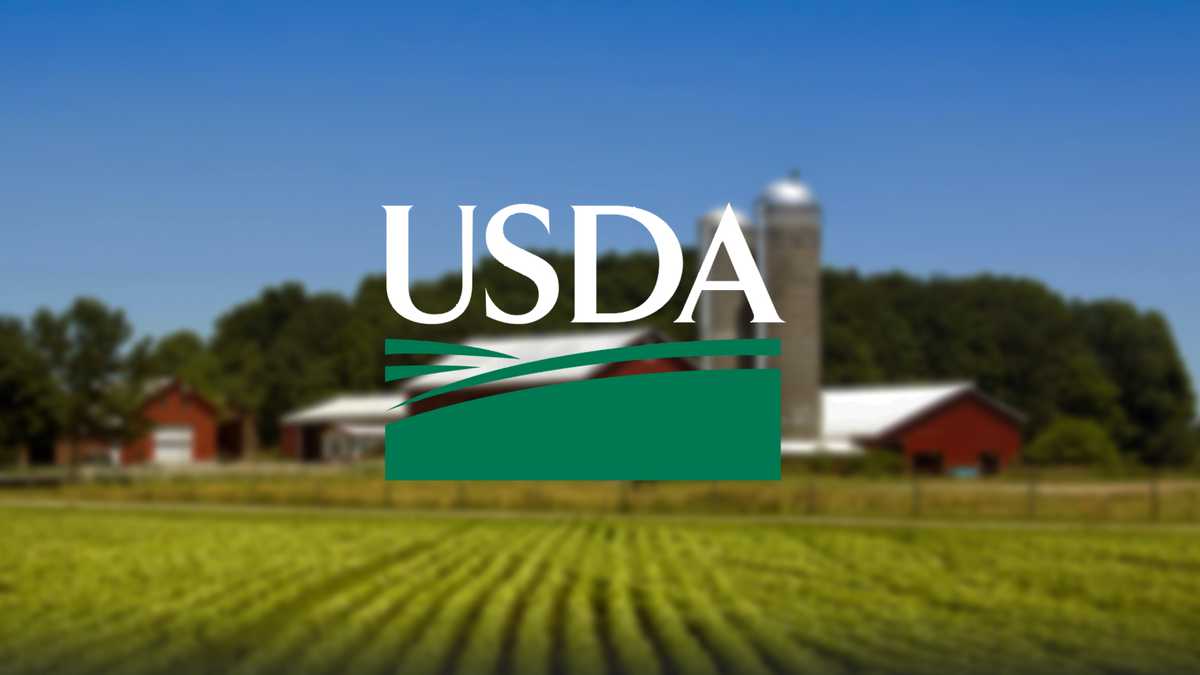
USDA Office of Communications
South Dakota farm numbers unchanged
SIOUX FALLS — South Dakota’s number of farms and ranches remained unchanged during 2019, according to USDA’s National Agricultural Statistics Service. The number of farms and ranches in the State, at 29,600, was unchanged from 2018. Numbers of farms and ranches in South Dakota with less than $100,000 in agricultural sales decreased 100 farms from the year earlier while operations with more than $100,000 in agricultural sales increased 100 farms.
Land in farms and ranches in South Dakota totaled 43.2 million acres, unchanged from 2018. The average size of operation, at 1,459 acres, was unchanged from a year earlier.
North Dakota farm numbers unchanged
FARGO, N.D. — North Dakota’s number of farms and ranches remained unchanged during 2019, according to USDA’s National Agricultural Statistics Service. The number of farms and ranches in the State, at 26,100, was unchanged from 2018. Numbers of farms and ranches in North Dakota with less than $100,000 in agricultural sales increased 100 farms from a year earlier while operations with more than $100,000 in agricultural sales decreased 100 farms.
Land in farms and ranches in North Dakota totaled 39.3 million acres, unchanged from 2018. The average size of operation, at 1,506 acres, was unchanged from a year earlier.
Minnesota down 500 farms
The total number of farms in Minnesota in 2019 was 68,000, down 500 farms from 2018, according to the USDA, National Agricultural Statistics Service – Farms and Land in Farms 2019 Summary report. Approximately two-thirds of Minnesota’s farms had less than $100,000 in sales.
Total land in farms in Minnesota in 2019 was 25.5 million acres, unchanged since 2017. Farms in the $250,000-$499,999 sales class showed an increase of 100,000 acres while farms in the $1,000,000 and over sales class showed a decrease of 100,000 acres from 2018.
The average farm size in Minnesota in 2019 was 375 acres, up three acres from 2018. The largest increases were in the $250,000-$499,999 sales class which increased 18 acres and in the $1,000,000 and over sales class which increased 21 acres on average from 2018.
Iowa down 700 farms
The total number of farms in Iowa in 2019 was 85,300, down 700 farms from 2018, according to the USDA, National Agricultural Statistics Service – Farms and Land in Farms 2019 Summary report. Farms in both the $100,000-$249,999 and the $500,000-$999,999 ranges decreased by 100, while farms in the $250,000-$499,999 sales class increased by 300.
Total land in farms in Iowa in 2019 was 30.6 million acres, unchanged since 2010.
The average farm size in Iowa in 2019 was 359 acres, up 3 acres from 2018.
Nebraska down 200 farms
LINCOLN, Neb. — Nebraska’s number of farms and ranches declined during 2019, according to USDA’s National Agricultural Statistics Service. The number of farms and ranches in the State, at 45,700, was down 200 farms from 2018. Numbers of farms and ranches in Nebraska with less than $100,000 in agricultural sales decreased 400 farms from a year earlier while operations with more than $100,000 in agricultural sales increased 200 farms.
Land in farms and ranches in Nebraska totaled 44.9 million acres, down 100,000 acres from 2018. The average size of operation, at 982 acres, was up 2 acres from a year earlier.
United States down 5,800 farms
The number of farms in the United States for 2019 is estimated at 2,023,400, down 5,800 farms from 2018. Total land in farms, at 897,400,000 acres, decreased 2,100,000 acres from 2018. The average farm size for 2019 is 444 acres, up 1 acre from the previous year.
Farm numbers and land in farms are differentiated by six economic sales classes. Farms and ranches are classified into these six sales classes by summing the sales of agricultural products and government program payments. Sales class breaks occur at $10,000, $100,000, $250,000, $500,000, and $1,000,000. Producers were asked during the 2019 mid-year surveys to report the value of sales based on production during the 2018 calendar year.
Point Farms are farms that did not have the required minimum $1,000 in sales for the year to qualify as a farm, but had sufficient crops and livestock to normally have sales of $1,000 or more. Point Farms are assigned a sales class based on the sum of the agricultural point (dollar) values assigned to the quantity of commodities produced but not sold. The 2017 Census of Agriculture showed that 471,593 farms or 23.1 percent of the 2,042,220 farms were Point Farms. These Point Farms operated 59,166,158 acres or 6.6 percent of the 900,217,576 acres of farmland.
Number of farms declined by 5,800 from 2018. The number of farms in the $100,000 — $249,999 and $250,000 -$499,999 sales classes increased while all other sales classes declined. In 2019, 51.1 percent of all farms had less than $10,000 in sales and 81.5 percent of all farms had less than $100,000 in sales. In 2019, 7.4 percent of all farms had sales of $500,000 or more.
Land in farms, at 897,400,000 acres, is down 2,100,000 acres from 2018. The biggest change for 2019 is that producers in Sales Class $100,000 — $249,999 operated 1,170,000 fewer acres than in 2018. In 2019, 30.2 percent of all farmland was operated by farms with less than $100,000 in sales, while 40.8 percent of all farmland was operated by farms with sales of $500,000 or more.
The average farm size continued to increase in 2019 as the number of farms declined. The overall average size increased by 1 acre to 444 acres per farm. Average farm size decreased in the $100,000-$249,999 and $250,000 — $499,999 sales classes and increased or remained unchanged in all others.
